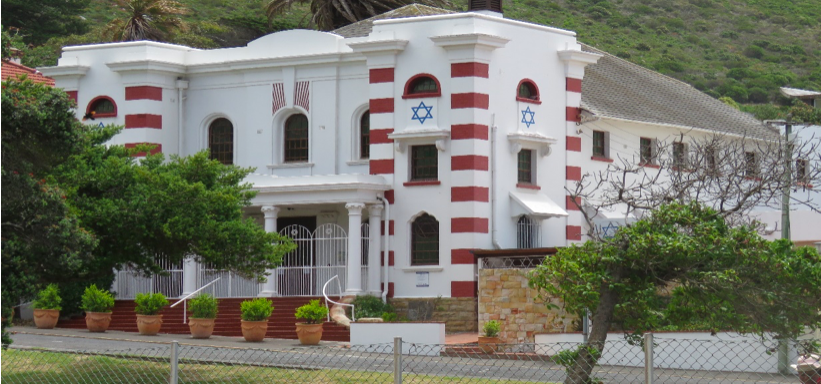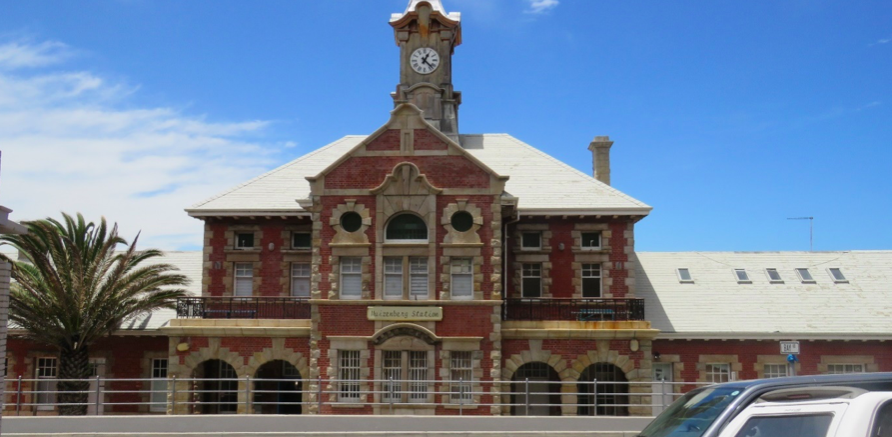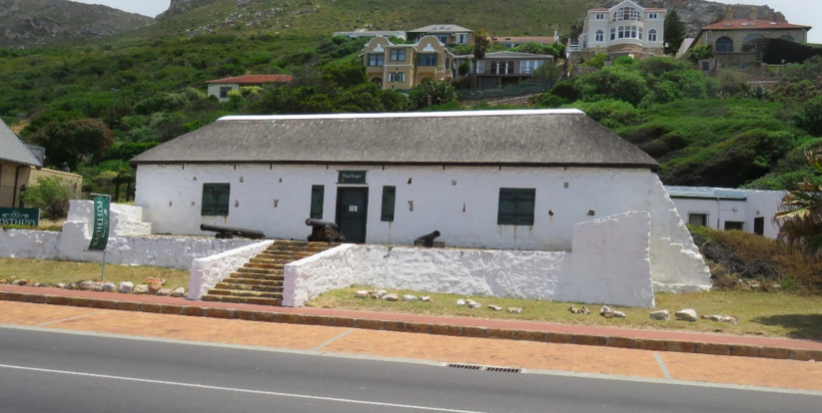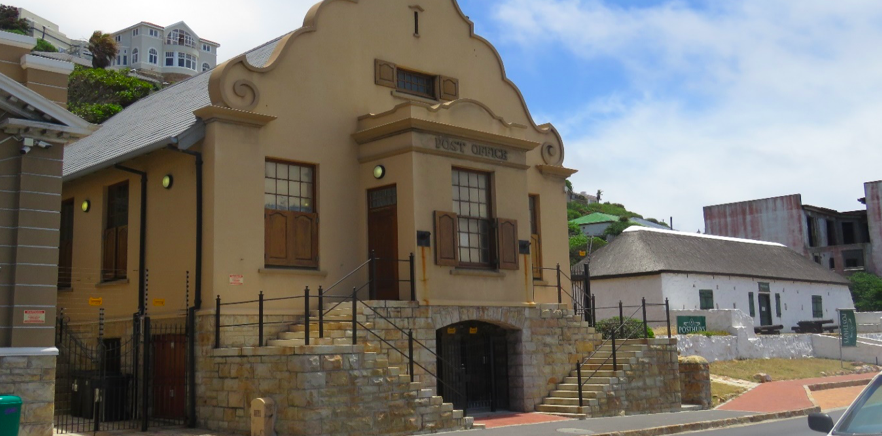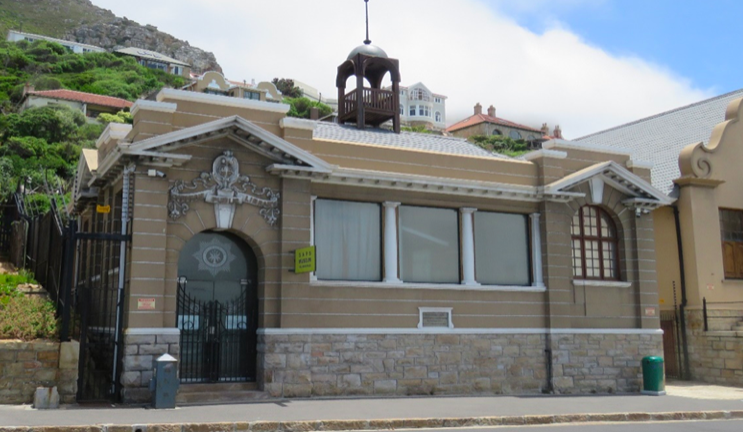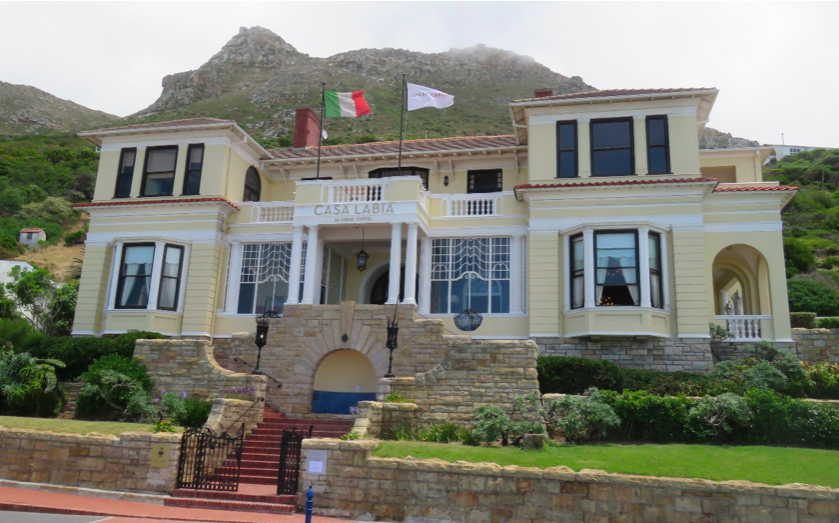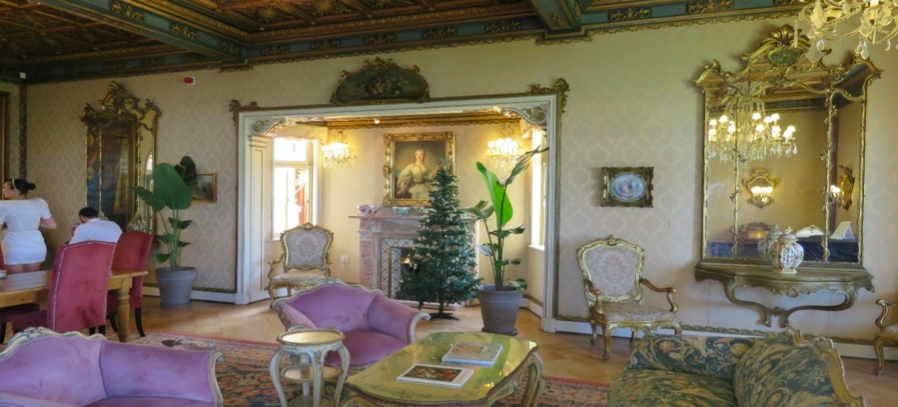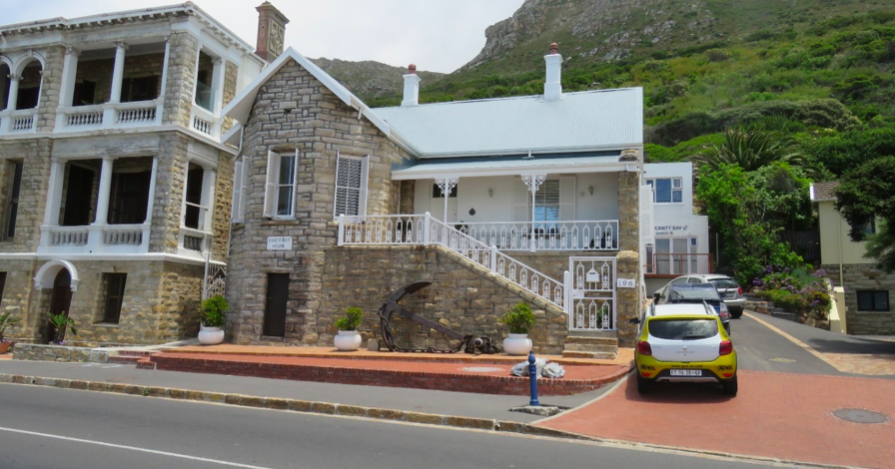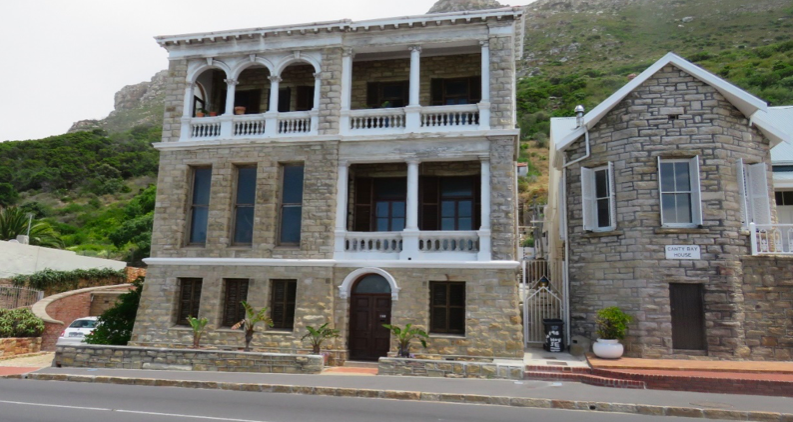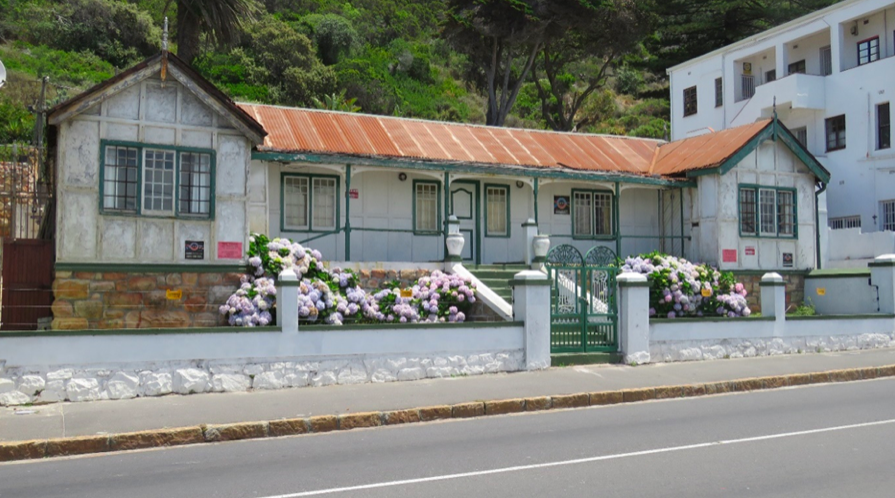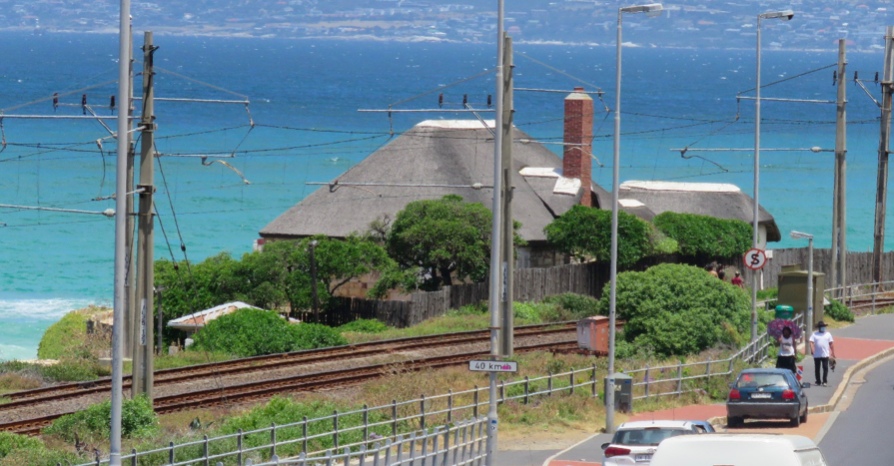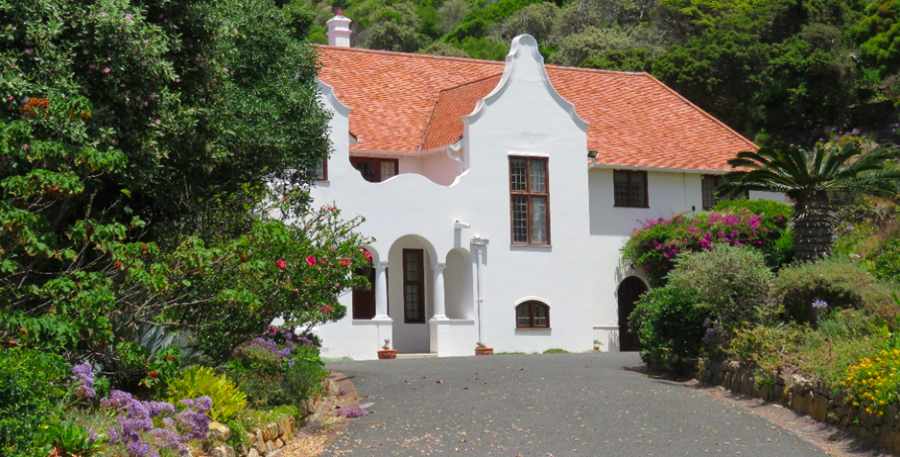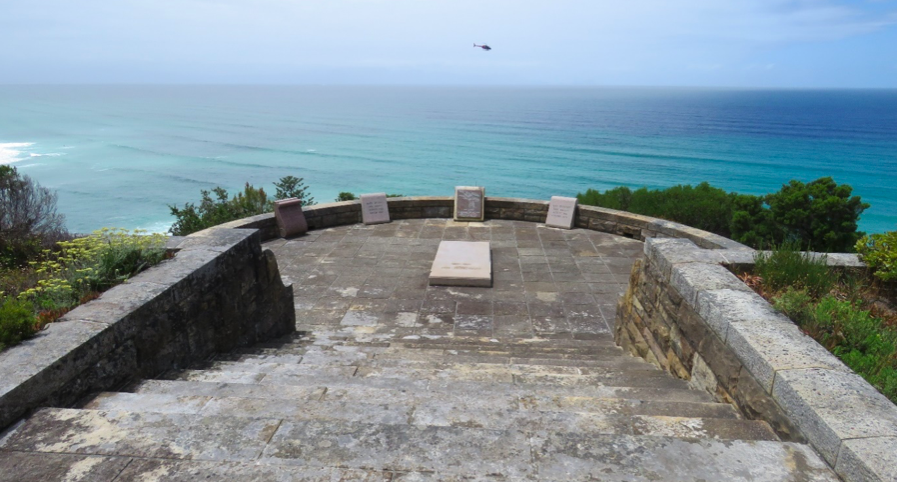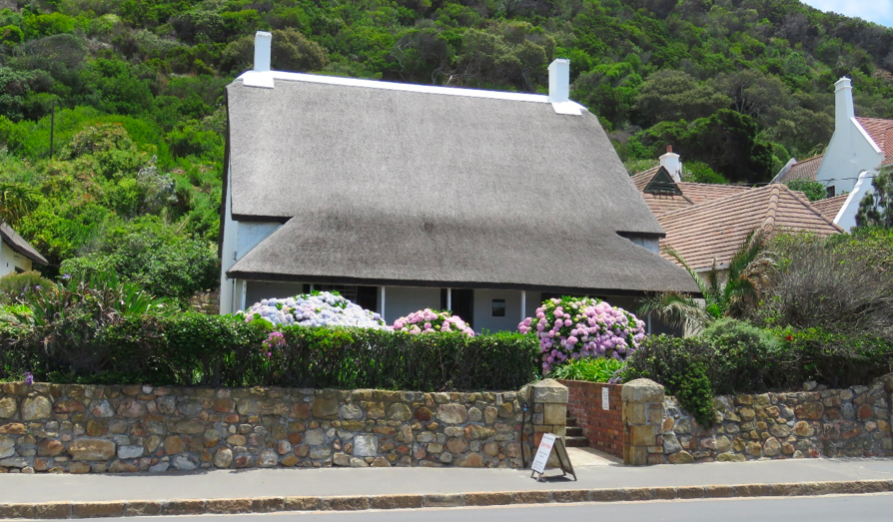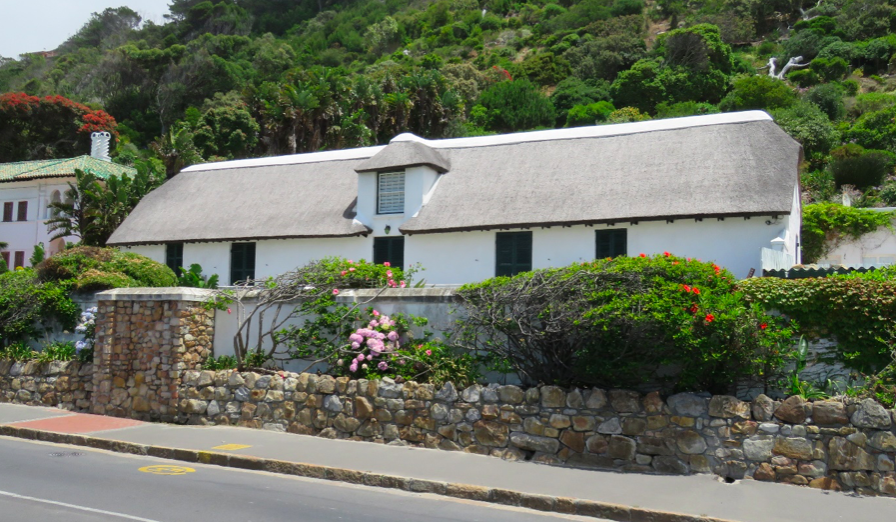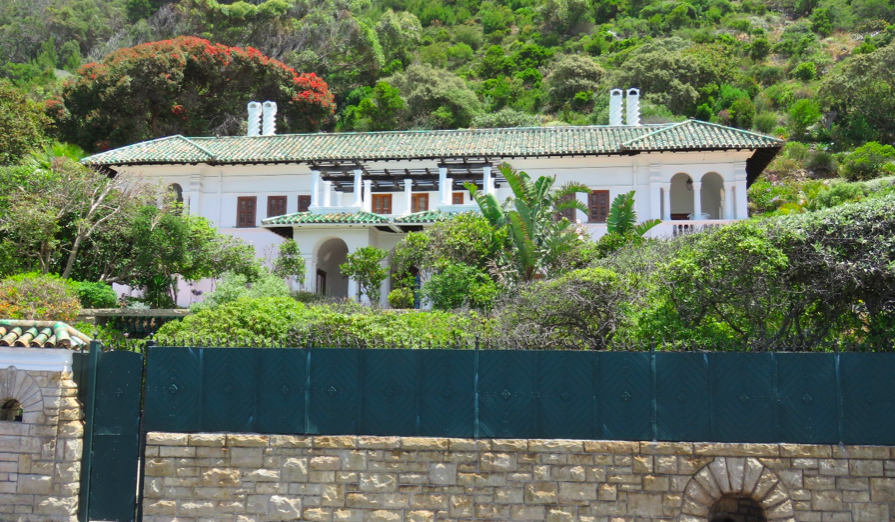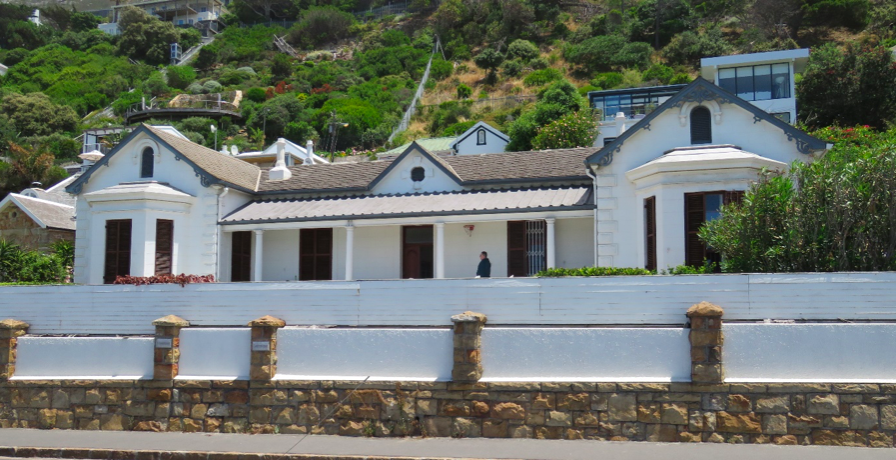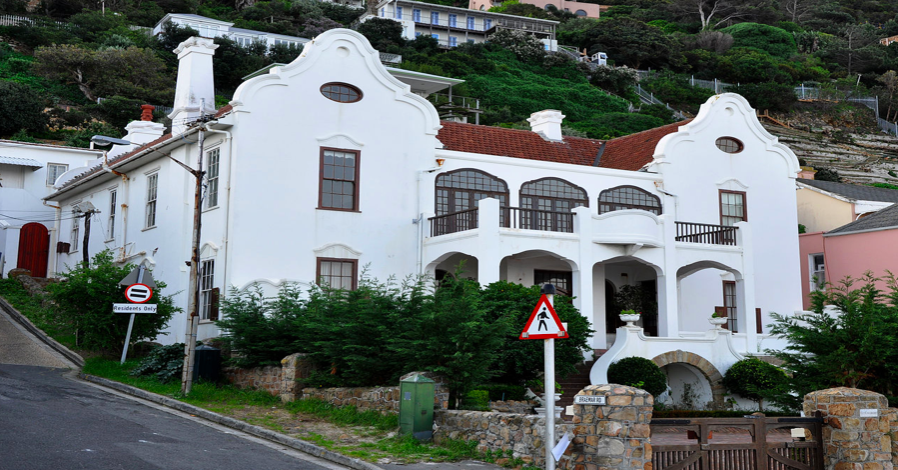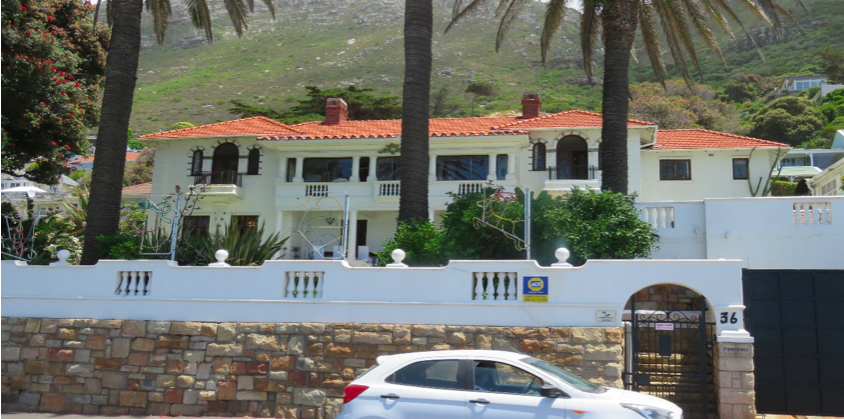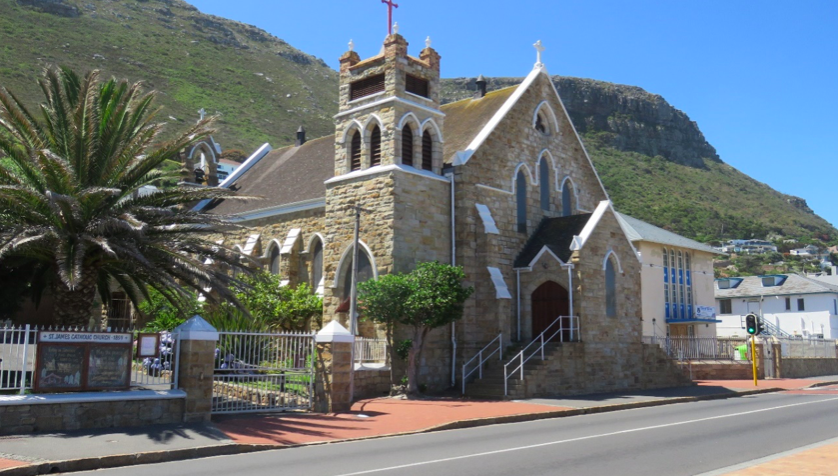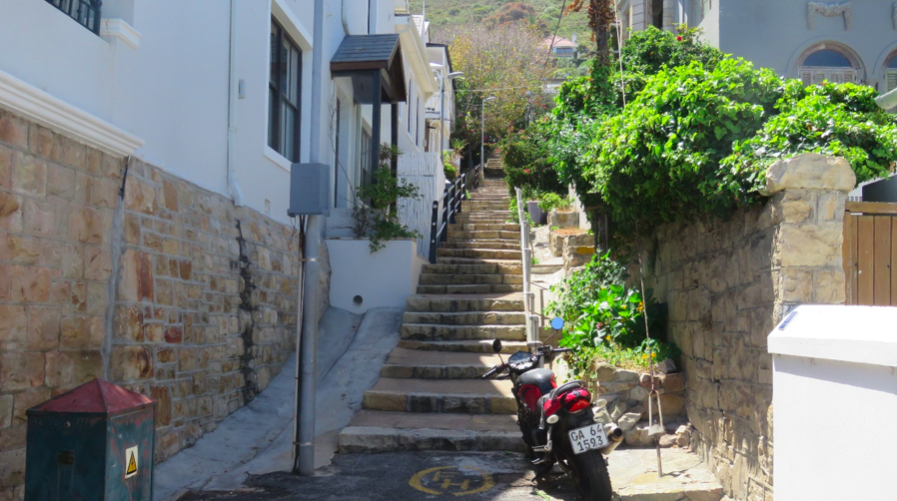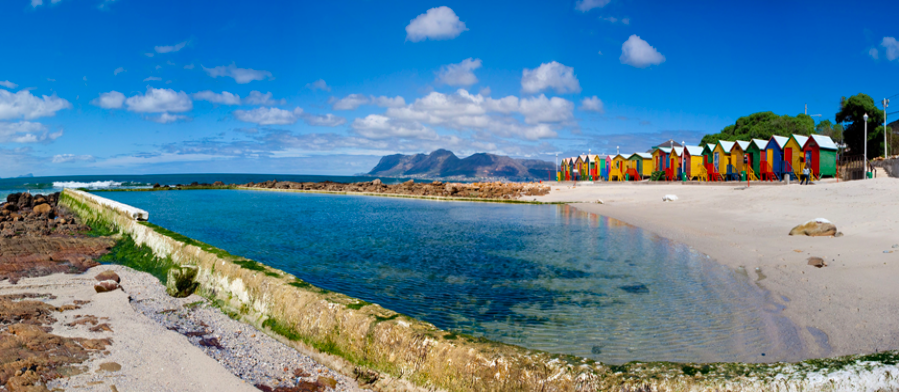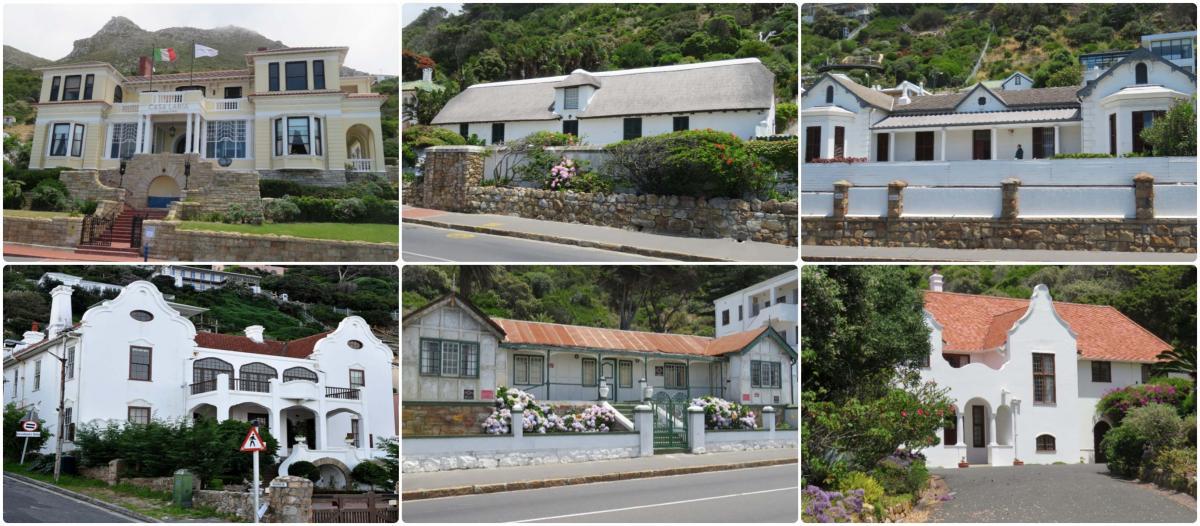
Disclaimer: Any views expressed by individuals and organisations are their own and do not in any way represent the views of The Heritage Portal. If you find any mistakes or historical inaccuracies, please contact the editor.
There surely cannot be many short walks, that match this one for its unique blend of fascinating architecture, history and of course, sublime views.
For my wife and I, no Cape Town holiday feels complete without walking this route at least several times. Although one can approach this walk from either end, we normally park at Kalk Bay and meander via Main Road to Muizenberg and back along the seaside walkway, just below the railway line. This walkway was created by the City Council, with generous financial assistance by local businessman and resident Mendel Kaplan.
When energetic, we walk a bit further along and then turn into Camp Street, past the Muizenberg Synagogue up to Boyes Drive and return on this elevated road, while enjoying the superb vista across False Bay.
1) Muizenberg Synagogue
The entrance to the Muizenberg Synagogue with its four columns and wide steps together with buttress-like projections on either side of the entrance with symmetrical and classical proportions, never fails to impress.
The plans for this synagogue were completed by architects Herbert Black & George Fagg and it officially opened on 17 January 1926 to great acclaim. Today, it is hard to imagine those halcyon years when during the December vacation season, the synagogue was overflowing with up-country congregants.
When the railway line from Cape Town reached Muizenberg in 1882, it immediately opened the warm waters of False Bay to day trippers and holiday makers. The establishment of a Village Management Board (1891-1895) and the Kalk Bay-Muizenberg Municipality (1895-1913) also ensured plans of early buildings were subjected to quite a thorough approval process.
It was only after the Municipality had widened and kerbed Main Road in 1904 that more prestigious residences were erected between Muizenberg and St James. It became known as the ‘Millionaire’s Mile’, since wealthy mining magnates and prominent businessmen alike, were soon attracted to this stretch of road with its cool sea breezes and scenic views.
Cecil John Rhodes, Sir Abe Bailey, Sammy Marks, Alpheus Williams, Sir J. B. Robinson and John Garlick bought properties here, turning it into a highly prestigious suburb.
World famous literary figures such as Rudyard Kipling and Agatha Christie, who both spent some time here, paid tribute to the appeal of Muizenberg in their work.
Muizenberg Synagogue, Camp Street (SJ de Klerk)
2) Muizenberg Railway Station
In 1913 the magnificent Edwardian Railway Station with its impressive clock tower designed by architect JC Tully (1858-1931), was completed by local builder W. Delbridge. Tully moved to Cape Town from Johannesburg as clerk-of-works for the rebuilding of Groote Schuur in 1897, after which he went into partnership with Spencer Water.
This splendid railway station was very appropriate for the festive atmosphere of this then very popular holiday village.
The only criticism of this building is that its rather crammed and sunken position between Main Road and the beach, detracts from its appeal.
Muizenberg Railway Station (SJ de Klerk)
3) The Posthuys
Initially thought to have been erected in 1673 and since this would have made the Posthuys the oldest surviving dwelling in South Africa, it was generously restored by the Anglo-American Corporation in 1982-83. Subsequent research indicated that it may not be quite that old and is now thought to have been built between 1730 and 1740.
It was built from stone on the site and served as a lookout post for the Dutch East India Company. After 1806, it served for a while as quarters for the British troop commander at Muizenberg.
The Posthuys, 182 Main Road (SJ de Klerk)
4) The Old Post Office
This post office has the distinction of being the first post office in South Africa to receive airmail post. On 27 December 1911, Evelyn ‘Bok’ Driver took off from Kenilworth racecourse in his Bleriot monoplane landing seven and a half minutes later at Oldham’s Field, near today’s False Bay Railway Station. This is the same model aircraft Louis Bleriot flew across the English Channel, merely two years prior.
When the post office relocated in 1934, the old post office became a Police Station. It was periodically used as a Magistrate’s Court and Police vans, known as ‘Black Maria’s, reversed into its street fronted entrance to offload awaiting trial prisoners.
The Old Post Office, 184 Main Road (SJ de Klerk)
5) The Carnegie Library
Dated 1910, this small T-shaped library was designed by the firm of Cowin & Lyon. With its construction, the old Toll House which stood on the site and dating from 1815, had to be demolished.
Andrew Carnegie established the Carnegie Foundation for the Advancement of Teaching in 1905. Although his foundation’s main philanthropic efforts were directed towards North America, it also established 12 twelve libraries across South Africa, in towns as diverse as Barberton, Hopetown, Harrismith, Moorreesburg and others.
The old Carnegie Library, 186 Main Road (SJ de Klerk)
6) Casa Labia
The palatial Casa Labia, also known as ‘The Fort’, was designed in 1929 by Fred Glennie (1889 – 1954) for Count Labia, then the Italian First Minister Plenipotentiary in South Africa.
Glennie designed many other well-known buildings in Cape Town, including the Board of Executors Building in 1929, on the corner of Adderley and Wale Streets. He was also co-founder of Kirstenbosch Botanical Gardens.
All the furnishings and decorations were imported as Count Labia wished to reflect the style and elegance of 18th century Venice, bearing in mind the Labia’s ancestral home, Palazzo Labia in Venice.
To complement the architecture, the Venetian designer Angelo Zaniol was brought to South Africa to oversee the interior design. He commissioned most of the interior furnishings; ornate ceiling panels, chandeliers, carpets and wall coverings made by Italian master craftsmen, both locally and in Italy. These furnishings provide this house with its Italian ambience.
Casa Labia, 190/4 Main Road (SJ de Klerk)
Sumptuous interior of Casa Labia (SJ de Klerk)
7) Canty Bay House
It is not known exactly when this late Victorian house was built, but the front bay and verandah were designed by architect Edward Simpkin (1854 – 1919) and added in 1899. At one stage it belonged to the Chief of the SA Defence Force, Admiral Hugo Biermann.
Canty Bay House, 196 Main Road (SJ de Klerk)
8) Knight’s Villa
George Ransome (1852 – 1910), responsible for designing the attractive and highly unusual Knight’s Villa, was considered one of the most outstanding architects of his time. He arrived in Cape Town in 1880 and worked in the Public Works Department in Cape Town, as the Chief Architect on the Houses of Parliament project in Government Avenue.
Knight’s Villa, originally known as Stone House, was based on a Venetian palazzo with the ground floor at the would-be water level. The owner was Clifford Knight, a partner in the local shipping firm Thomson Watson & Co.
Knight’s Villa, 198 Main Road (SJ de Klerk)
9) Yokohama
Yokohama, now sadly rather dilapidated, was built by Grace Tozer around 1900 as a holiday house, following her marriage to William Tozer, a Cape Town pharmacist. It was designed and constructed as a maintenance-free house due to its proximity to the sea. The walls were modelled on Japanese papier mâché infill. The timber was imported from India and only screws of solid brass were used together with Madeira roof tiles.
Unfortunately, the condition of the walls deteriorated because subsequent owners applied acrylic paints to them, preventing the paper from airing sufficiently.
Yokohama 210 Main Road (SJ de Klerk)
10) Bailey’s Cottage
Bailey’s Cottage situated on the seaside of Main Road, between the sea and the railway line, was designed as a beach cottage for Sir Abe Bailey in 1909 by the firm of Baker and Masey.
Bailey’s Cottage (SJ de Klerk)
11) Rust-en-Vrede
Herbert Baker had completed some sketches for a summer house for Cecil Rhodes above Main Road. According to Baker, Rhodes had planned to build Rust-en-Vrede ‘near his little cottage but higher up the hill in better air, and I raised for him a terrace with a high retaining wall overlooking the surf …’. Rhodes never built this house because of the South African War and his desire to save money for the endowment of his Oxford scholarships. This site and the plans completed in detail by Masey were subsequently taken over by Abe Bailey.
On that terrace wrote Baker, ‘…. we built a deep arched and white columned stoep so that the road below was hidden, and nothing marred the view of the waves breaking on the rocks and the blue sea beyond’. From this fabulous site ‘the view stretches over the wide expanse of False bay to the high-cliffed promontories of Cape Point and Danger Point, the far distant outposts of the bay’.
This plastered house completed in 1905 is H-shaped to which are added various projections, each ending in a narrow Flemish-looking gable. Because of the nature of the site, the main entrance is on the Muizenberg side.
It is thought Rust-en-Vrede was to a large extent a prototype for Marienhof, now known as Brenthurst.
Side view of Rust-en-Vrede, 244 Main Road (SJ de Klerk)
High above the house lies the burial plot of Sir Abe Bailey and members of his immediate family. One reaches this burial spot with its exquisite views via a long stone staircase, descending from Boyes Drive. A plaque simply states, ‘The grave site of Sir Abe Bailey, Bt, KCMG, 1864 – 1940. Soldier, Farmer, Sportsman, Philanthropist and Pioneer in the development of the South African mining industry’.
A nice touch is the placement of a stone bench on either side of the staircase allowing the visitor to enjoy the wonderful views before commencing the steep walk back to Boyes Drive.
Grave site of Sir Abe Bailey and family members high above Rust-en-Vrede (SJ de Klerk)
12) Rhodes Cottage
Rhodes bought this cottage in 1899 from the widow of the late James Robertson Reid. It was one of the early landmarks on the road to Simon’s Town, and built circa 1870. Originally built with a thatched roof this had been changed to corrugated iron prior to Rhodes’ purchase. Here Rhodes died on 26 March 1902 and the cottage was left untouched until 1904, when the corrugated roof was removed, the gables raised and the roof rethatched.
Rhodes Cottage, 246 Main Road (SJ de Klerk)
13) Long Cottage
Hans Fransen calls this, ‘the most impressive of several thatched houses along the Muizenberg-Kalk Bay coastal stretch’. Apparently, various periods, materials and details are represented in the interior woodwork, some beams possibly taken from wrecked ships.
The oldest part of the house is thought to have been built in 1856 as a fisherman’s cottage. During the early 1870’s the house was used by Governor Sir Henry Barkly as a seaside cottage.
The house and much of the adjoining land was later owned by merchant John Garlick, who built the beautiful neighbouring mansion, Graceland.
Long Cottage, 248 Main Road (SJ de Klerk)
14) Graceland
Graceland, orignally called Watergate was designed in 1914 by William Grant (1877 – 1957) for the department store owner John Garlick.
One of the most magnificent mansions on this coastline, Michael Walker claims it was a step forward in Grant’s architecture, as it introduced what became known as Cape Mediterranean architecture. It consisted of a mixture of Cape features (twirly chimneys, half-shutter sash windows and plaster mouldings) with Italian/Spanish elements (clay tile roofs, arches, loggias, pergolas on columns, etc.).
Grant was also responsible for converting a modest villa into the beautiful home for Margaret Kerr in 1916, also in the Cape Mediterranean style, namely The Breakers at 266 Main Road.
In the 1930’s Grant transitioned his architectural style to design several very successful Art Deco office blocks in Cape Town.
Graceland 250/252 Main Road (SJ de Klerk)
15) Carisbrooke
A symmetrical Victorian house with high slate roof, it was built in 1879 for Mrs Sophia Jamison, daughter of William Hiddingh, the jurist and benefactor.
Hans Fransen claims its present appearance seems to date more from 1890 and possibly it was slightly refashioned thereabouts.
Carisbrooke, 2 Main Road (SJ de Klerk)
16) Ceolnamara
Ceolnamara, Gaelic for ‘music of the sea’, was designed by Charles Smith (1863 – 1930) for William Robb in 1920, in the Cape Dutch Revival architecture style popularised by Herbert Baker.
Ceolnamara, 20 Main Road (via Wiki Commons)
17) Stonehenge
This property was named after a group of rocks in the sea off the St James beach opposite the house.
This Italianate villa built circa 1930, belonged to H. P. Rudd of Kimberley fame, who apparently had a private railway siding near the St James station. The Greek Royal Family lived here, courtesy of the Union Government when, following the invasion of the German Wehrmacht, they fled Greece during the Second World War.
Stonehenge 34 Main Road (SJ de Klerk)
18) Star of the Sea Convent
A Roman Catholic chapel was built here in 1858 to cater for shipwrecked Filipino fisherman who settled here in the 1850’s. It stood below the main road and was later demolished to make way for the railway.
Father J. Duignam, the local priest erected a fairly large stone church here of five bays in 1900/01 after designs by J. Ransome. Apparently, the local Filipino community assisted with the building together with some Italian stone masons stationed in Simon’s Town for the construction of the Selborne Docks. In 1947 Monsignor Doran constructed a new entrance and turned the old entrance on the Kalk Bay side into a confessional.
The St James Catholic Church (SJ de Klerk)
19) Jacob’s Ladder
This is one of several alleyways up the mountain slope in St James, but quite possibly the most interesting one. Constructed in 1890 it consisted of 120 steps. In the 1920’s it was extended as far as the newly constructed Boyes Drive. The six houses lining it, all face downhill and all but one, are double storeyed. They date from around the commencement of the 20th century.
Jacob’s Ladder (SJ de Klerk)
20) The St. James Beach and Bathing Boxes
According to oral tradition this tidal pool was originally constructed by the Khoi as a fish trap. Advocate Bill Schreiner, son of W. P. Schreiner, erstwhile Premier of the Cape Colony, lived most of his life at Eastcliffe on 16 Main Road. He was instrumental in persuading the Kalk Bay-Muizenberg Municipality to build a concrete wall thus creating a proper bathing tidal pool at St James in 1911.
The bathing boxes originally were built as private dressing booths for families, and there used to be many more in earlier days.
St. James tidal pool and colourful Bathing Boxes (sourced via Pinterest)
About the author: SJ De Klerk held many senior positions in HR during a distinguished career in the private sector. Since retiring he has dedicated time and resources to researching, exploring and writing about South African history.
References
- Fransen H. (2004). A Guide to The Old Buildings of the Cape. Jonathan Ball Publishers, Jeppe’s Town.
- Greig D. (1971). A Guide to the Architecture in South Africa. Howard Timmins, Cape Town.
- Muir J. (2013). Walking Cape Town. Urban walks and drives in the Cape Peninsula. Struik Travel and Heritage, Cape Town.
- Schoeman C. (1989). Historical Walk Muizenberg/St James. Published by the Civic Gallery, Cape Town City Council, Cape Town.
- Walker M. J. (Non-dated). Historical Walk Muizenberg/St James. Kalk Bay Historical Association, Kalk Bay.
- Walker Michael. (2010). Statement in Stone. The early buildings and their architects Muizenberg – St. James – Kalk Bay. 1897 – 1927. Shumani Printers.
Comments will load below. If for any reason none appear click here for some troubleshooting tips. If you would like to post a comment and need instructions click here.

